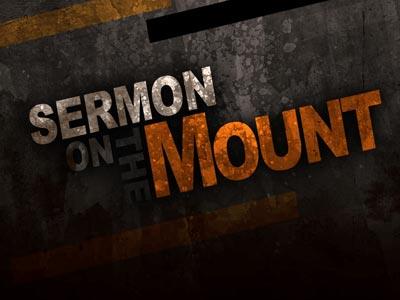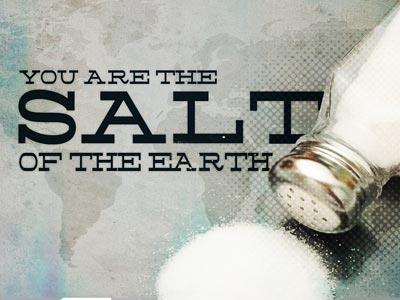-
Who Heard The Greatest Sermon Ever Preached? Series
Contributed by Mark A. Barber on Jan 3, 2014 (message contributor)
Summary: What does the Sermon on the Mount mean for us?
Who Heard the Greatest Sermon Ever Preached?
There probably haven’t been a lot of sermons preached on this particular passage, seeing it is short and acts as a transition from the healing ministry of Jesus to His teaching ministry. This does not mean that He didn’t teach before, but it seems that His teaching was interrupted by the great needs of the people. Starting in Matthew 5:3.Jesu begins the longest sermon that He preached that is recorded in Scripture.
What makes this passage important is that it identifies those who followed Jesus. Who heard the greatest sermon ever preached? Was this sermon preached to Jews only, and therefore its teachings are binding on native Jews? Or is it a sermon reserved for the millennial kingdom as some suggest? The question I would have about this is why would Jesus preach a sermon that had no application to those who heard it that day? And as to the first question, we shall see that there were more than just ethnic Jews among the followers of Jesus.
Let us examine the context in which the Sermon on the Mount was preached. This begins with verse 25 of chapter 4. Here it mentions that a great crowd followed Him. Some of these came from Galilee, which Matthew says starting at 4:13 that Jesus went to after them temptation. Galilee was a region of mixed Jewish and Gentile communities. Matthew mentions “Galilee of the Gentiles” (or nations) from the prophecy of Isaiah as Jesus’ fulfillment of that prophecy. Next Matthew mentions that they came from Decapolis. Decapolis, which means “ten cities” in Greek, was predominantly Gentile. Then Matthew mentions that people came from Jerusalem and Judea who were Jewish. Then he lastly mentions that those from beyond Jordan which was racially mixed. So when we look at those who followed Jesus, they were of mixed nationality. This is especially emphasized that mixed areas come first and last. Then it is interesting that the Gentiles from Decapolis come in order before the Jewish areas. I feel this is significant.
These followers made up the “crowd” that Jesus saw in 5:1. The Greek records “crowds” or the plural to indicate that it was a large crowd which came together from every direction. “Crowd” is not necessarily a friendly term. From the point of view of the Pharisee, the word they would have used was “mob” or “rabble”. . They has a special name for these people whom they considered illiterate and uneducated in the Jewish Law. They were the “am ha-aretz” or “people of the land.” Most of the Jewish leaders would have included Jesus and the disciples in this group and say so explicitly in places.
We are not exactly sure when the Pharisees came on the scent, but their origins may go back to the times of Ezra and Nehemiah. Both of these books emphasize the racial purity the Jews were to strictly observe. The Jewish men had to prove their Jewish pedigree, especially for the priesthood. Those who had married foreign wives had to divorce their foreign wives and disown the children they had by them. This seems so incredibly harsh that I wonder if Scripture should be interpreted on two levels, one normatively which means that we are to observe its principles and informative which is used to illuminate what had gone on in the past but does not have the force of law upon us. Ezra and Nehemiah had excluded the Samaritans from the assembly as people of the land.
However, we see a different picture in the New Testament. Gentiles and those of mixed race were not to be excluded from the new people of God. Matthew is dramatic in demonstrating this. King David by the rules of the Pharisees should have been excluded as he had foreign women in his genealogy which is also Jesus’ genealogy. Matthew did not have to point out these women, but he went out of the way to do so. Two of them were Canaanites, one a prostitute and the other played one. Ruth the Moabitess was especially to be excluded from the assembly of Israel and her descendants forever. Bathsheba was married to a Hittite before David and was probably a Hittite herself.
Matthew seems to avoid the Jewish ceremonies involved in Jesus’ birth. Luke mentions shepherds who were probably Jewish. Matthew mentions Gentile Magi. Matthew skips over the presentation in the Temple, does not mention circumcision, does not mention Jesus confounding the Jewish doctors in the Temple at the age of twelve. In fact, other than Satan taking him to the pinnacle of the Temple during the Temptation in the wilderness, one could read Matthew in such a way as to think that the only time Jesus was ever in Jerusalem was during Holy Week which ended with His crucifixion. I am certainly not saying this is the case, but one must wonder why Jewish ceremony is deemphasized and inclusion of Gentiles emphasized in a Gospel that many commentators feel was written to Jewish-Christians.

 Sermon Central
Sermon Central



